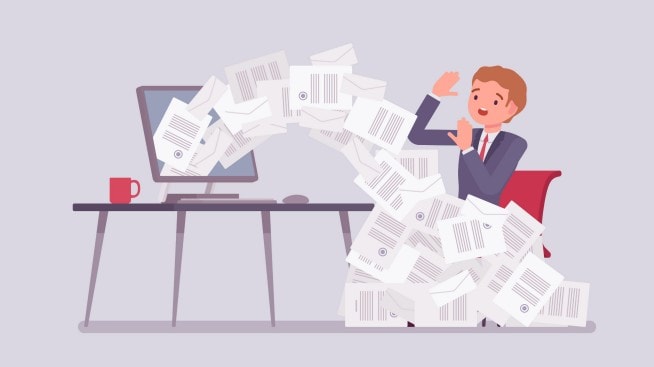What are the six different types of bankruptcies?

When you think of bankruptcy, you might imagine a negative number, a deficit, or a “closed” sign in front of a business. When you hear the word “bankrupt,” you might think about the idea of having zero funds available to pay creditors — and the reality that some companies can file for bankruptcy but seemingly stay in business. How is that even possible? What's the difference between the various chapters of bankruptcy and why are they used in some cases but not others?
While you may or may not be worried about bankruptcy affecting you or your credit personally, it can still be wise to understand how it can impact your credit profile. Chase Credit Journey® is a free online tool that provides you with your free credit score provided by Experian™ and with different resources that help you understand what is impacting your score.
Businesses and individuals can file for bankruptcy, but your score may be more directly impacted if filing as an individual. There are six primary types of bankruptcies under the U.S. Bankruptcy Code. Let‘s explore this in greater detail below.
Chapter 7 bankruptcy — Liquidation
Known as “liquidation” or “straight bankruptcy,” Chapter 7 bankruptcy is filed to help clear debts by selling off your possessions and returning assets. When you file for Chapter 7, the court puts a hold on debt collections attempts, such as foreclosures.
Chapter 13 bankruptcy — Wage earner’s plan
Chapter 13 bankruptcy enables individuals who have combined debts as of the date of filing of less than $2,750,000 to propose a repayment plan.
In this Chapter, individuals propose a plan to repay debts over the course of three to five years, depending on how much income the person filing makes. Once filed, this Chapter pauses attempts from creditors to collect debts from you.
Chapter 11 bankruptcy — Reorganization bankruptcy
You may have noticed that some companies file for bankruptcy, but are still in business—how? With Chapter 11 bankruptcy, a business can continue to while restructuring. A business will propose a plan of reorganization and creditors will have a chance to vote before the plan is up for approval by the court. There are additional specifications, but essentially it gives a business time to make payments towards their debt without completely stopping operations.
Chapter 9 bankruptcy — Municipalities
Chapter 9 bankruptcy is used only for municipalities. Municipality defined by uscourts.gov as a “political subdivision or public agency or instrumentality of a State“ and includes cities, counties, school districts and other types of municipalities. A Chapter 9 bankruptcy allows a municipality to reorganize its debts and create a plan to adjust its obligations while continuing to provide essential services to its residents.
Chapter 12 bankruptcy — Family farmers and fishermen
Chapter 12 bankruptcy is exclusively for family farmers and family fishermen. It allows them to create a plan to repay debts over a period of three to five years.
Chapter 15 bankruptcy — International
The main purpose of Chapter 15 bankruptcy is to help provide an effective way to manage insolvency cases that involve people and assets in more than one country. Chapter 15 facilitates cooperation between U.S. and foreign courts, according to the statute:
- Establishing greater legal certainty for trades/investments
- Offering fair and efficient administration of cross-border insolvencies that protects creditors and interested parties
- Providing protection and maximizing the value of debtors’ assets
- Facilitation of the rescue of financially troubled businesses
This type of bankruptcy is typically filed by a foreign representative on behalf of a debtor involved in a foreign insolvency proceeding.
Which should you file for?
It can be beneficial to make sure you’re keeping track of your financial obligations and monitor your credit in order to help avoid filing for bankruptcy. You can stay on top of your credit with the help of Credit Journey®, for example, which offers credit monitoring services.
But if you need to file for any of the chapters described above, it all comes down to what kind of debts you owe and your particular situation. Moreover, if you are building up credit after bankruptcy, you might want to track your financial habits; enrolling in Credit Journey can assist you on this path.
How bankruptcy affects your credit
Though filing for bankruptcy can allow you to protect important assets like your home, car and more, it will appear on your credit report, which can negatively impact your credit score.
Additionally, bankruptcy doesn’t have to last forever, and neither does the impact to your credit score. Bankruptcy falls off your credit report after 7–10 years, and you can take active steps towards improving your credit over time. In fact, when you use the credit score improvement feature within Credit Journey, you can receive a personalized action plan provided by Experian™ to help you set and meet credit score goals.
No matter what kind of bankruptcy you may be filing for, monitor your financial obligations and read the laws regarding each type of bankruptcy carefully. Familiarizing yourself with the specifics Chapter plan will help you choose the one that best aligns with your financial situation, enabling you to start the debt management process. Note that it might be a good idea to consult your legal advisor.



